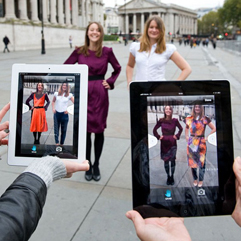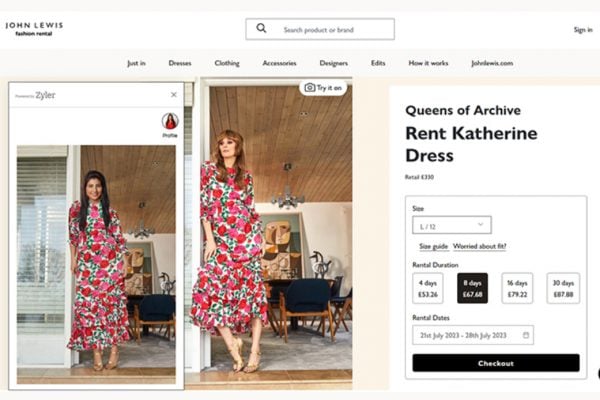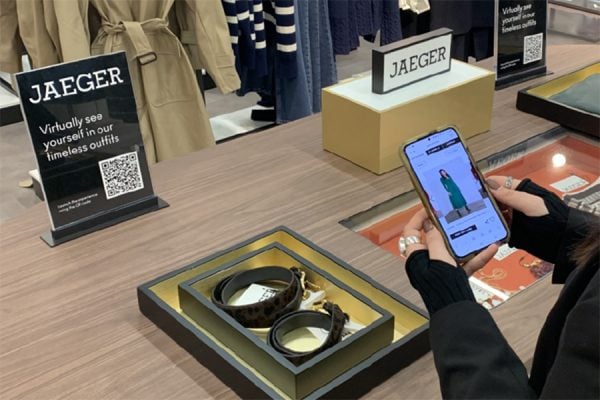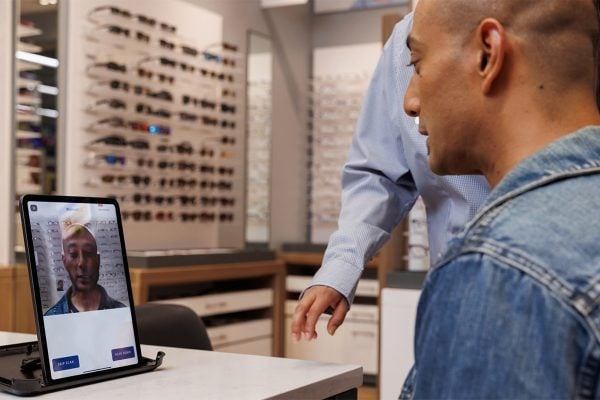Jodie Pride works at multichannel management solutions provider, Veeqo. Today in this guest post she takes a look away from the virtual world of the Internet and looks at how virtual reality will change the high street as we know it today.
Much of the technology is starting online in the virtual world, with companies like eBay experimenting and leading the way. However it’s on the high street that new technologies may have the greatest impact bringing together physical stock with augmented reality to bring it to life.
How Virtual reality will change the face of the high street as we know it
The idea of virtual reality has been tossed around for decades, but we’re finally at the stage where it’s becoming actualised and is no longer just an abstract concept; it’s time to recognize virtual reality as more than merely a faddish trend destined to float around on social media before disappearing into obscurity. Virtual reality is both exciting and engaging; put that into a retail environment and you’ve got a powerful tool with which to drive sales and offer the consumer a unique and memorable experience that’s differentiated from online and in-store shopping.
Introduce virtual reality to the high street and shopping becomes even more immersive and experiential, turning stores into places where you’ll want to spend your time browsing, rather than nipping in and out to buy something you’ve already had your eye on.
https://youtube.com/watch?v=Go9rf9GmYpM
Pepsi successfully tried their hand at virtual reality recently in Oxford Street, London. The company replaced a panel of glass at a bus stop with a screen which appeared to be a window, but with objects such as flying saucers appearing on the “street”, much to the surprise and confusion of passers by.
TopShop carried out a similar stunt by running a virtual reality version of their London Fashion Week catwalk show in their flagship Oxford Circus store. Part of the store was equipped with units which shoppers could use to experience the fashion show as it happened. Virtual reality makes you feel more like you’re in the action with video and sound playing on your senses, making it a far more engaging and memorable experience than simply watching a video or looking at a picture.
Hot Pink is another great example of how retailers are taking advantage of virtual reality, except this jewellers are incorporating 3D printing too. The company uses a 3D modelling software to design custom engagement rings. The customer has control over every aspect of the design – shape, engravement, colour – and once it’s been created, the ring is modelled on a virtual hand. They also offer a prototype service.
This kind of virtual reality could make shopping a much more fun experience, and give those who might not enjoy shopping a reason to go to the shops. Fashion stores could eliminate the need for store displays – imagine virtual mannequins walking around in their clothing lines, with items changing by the hour; book shops could immerse their customers in the fantasy worlds of The Hunger Games or Lord of the Rings; sports shops can show their gear in action. The possibilities are truly endless.
 And it doesn’t stop there. Ecommerce retailers could also take advantage of virtual reality – take a look at Debenhams, who trialed a virtual changing room app which allowed users to view themselves in garments without actually trying them on. Ecommerce retailers might be used to working with the concept of virtual reality (inventory management software, for example, is like managing a virtual inventory) but they could take advantage of this kind of app, allowing their customers to effectively try before they buy.
And it doesn’t stop there. Ecommerce retailers could also take advantage of virtual reality – take a look at Debenhams, who trialed a virtual changing room app which allowed users to view themselves in garments without actually trying them on. Ecommerce retailers might be used to working with the concept of virtual reality (inventory management software, for example, is like managing a virtual inventory) but they could take advantage of this kind of app, allowing their customers to effectively try before they buy.
Google Glass could also play a part in revolutionising retail from a virtual reality point of view. Instead of whipping out your phone out to search for the lowest price, find contact information or get directions, everything is there without the user even having to move. That means you have free use of your hands to get your wallet out, carry bags, push a trolley etc without the need for a phone.
Google Glass could also make interacting with the web while in a store much more seamless. If the user has their Glass device to their Google account, it will have access to their internet search history and emails, allowing it to pick out items it thinks the person will like, based on their tastes. For instance, if a shopper often buys from Zara online, a promotion could be sent to them when they walk past a Zara store and Glass recognises the logo. Location data could also be used to generate offers – Glass could send the shopper a 10% offer when it detects them walking past a cafe they regularly visit, for example.
Although virtual reality isn’t a new concept, it’s only just become a reality, but with an abundance of uses for it already materialising, there’s no denying this technology has the potential to revolutionize the face of the high street as we know it.









